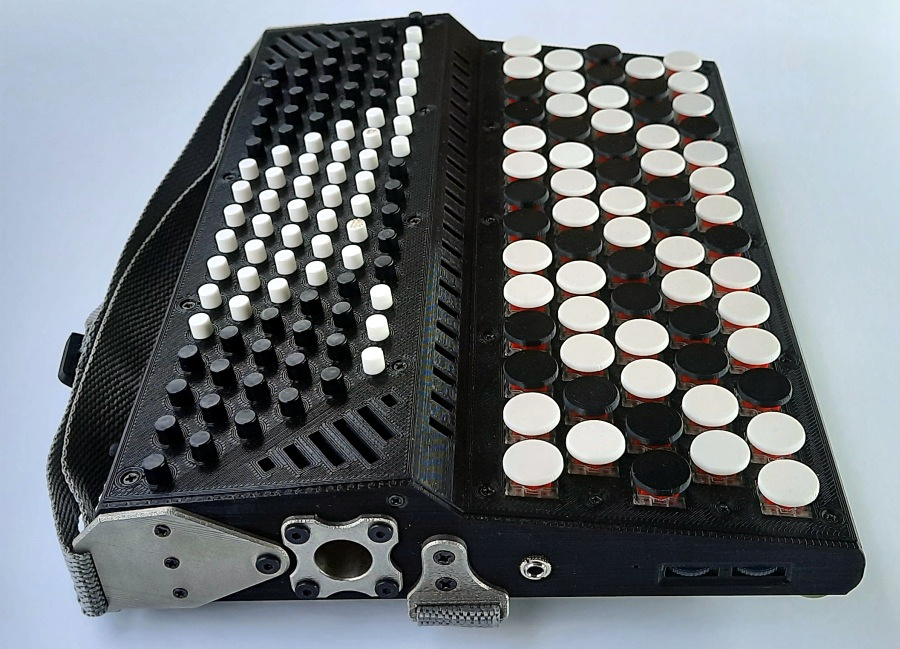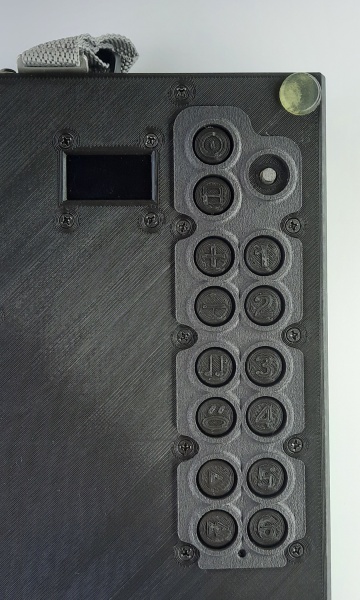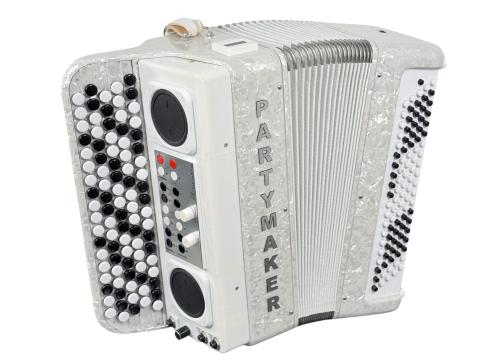
The idea for this project came to me when I realized that the button accordion that I play is too heavy to carry around casually behind me. I’d like to have a compact, lightweight instrument that fits in a backpack and doesn’t require any major periodic maintenance.
This project is a finalist of MIDI Innovation Awards 2024.
The Digital Flex Accordion

The Digital Flex Accordion is the next step in the evolution of my portable digital instruments - now featuring two full keyboards with built-in accompaniment capabilities. Despite the addition of the second keyboard, it remains even more compact and travel-friendly than earlier designs.
As it is extremely flexible in use and digital, obviously, I called it Digital Flex Accordion.
The instrument has no bellows - sound is controlled via a breath sensor that allows natural volume shaping and expressive dynamics. The breath sensor is isolated from condensation and saliva, ensuring reliability and hygiene. A musician can emphasize expressive places by varying the volume.
This instrument is extremely compact and has everything a musician needs built-in. No external boxes and equipment! It is now a portable companion that fits in a backpack for seamless travel, whether to a party or the beach, without extra seat or luggage costs on airplanes.
Additionally, the Digital Flex Accordion eliminates typical acoustic accordion issues like valve leakage and mechanical issues, ensuring maintenance-free longevity.
One of the most inspiring features of the instrument is the built-in auto-accompaniment. With it, musical exploration reaches new heights. You select the harmony by pressing chords with your left hand, while your right hand drives the melody with your inspiration.
Features
- About 2 lbs (1 kg) and a mere 11x8x1.6 inches (27x19x4 cm) in size (the same as US letter) - fits in a backpack.
- Dual keyboards: 6-row left, 5-row right, variety of layouts (B/C system, Stradella, free bass).
- Velocity-sensitive keys with adjustable response. The faster you press the buttons, the sharper the sound.
- Integrated breath controller with customizable curve.
- Built-in 2W speakers and a stereo headphone output.
- USB MIDI (class compliant), no drivers required.
- Rechargeable battery, over 8 hours of playtime.
- Optional bluetooth audio input for playback mixing and wireless audio output.
- Optional sustain pedal input.
- Ergonomic straps that replicate the design of a traditional accordion.
- Onboard effects: reverb, chorus, distortion, etc.
- An analog controller for pitch bends and effects manipulation, located in the left half of the instrument.
- Display and control buttons located on rear panel:

Some demos
-
I’m showcasing the features of the Digital Flex Accordion:
-
A demo on Music China 2024

Use the share button below if you liked it.
It makes me smile, when I see it.